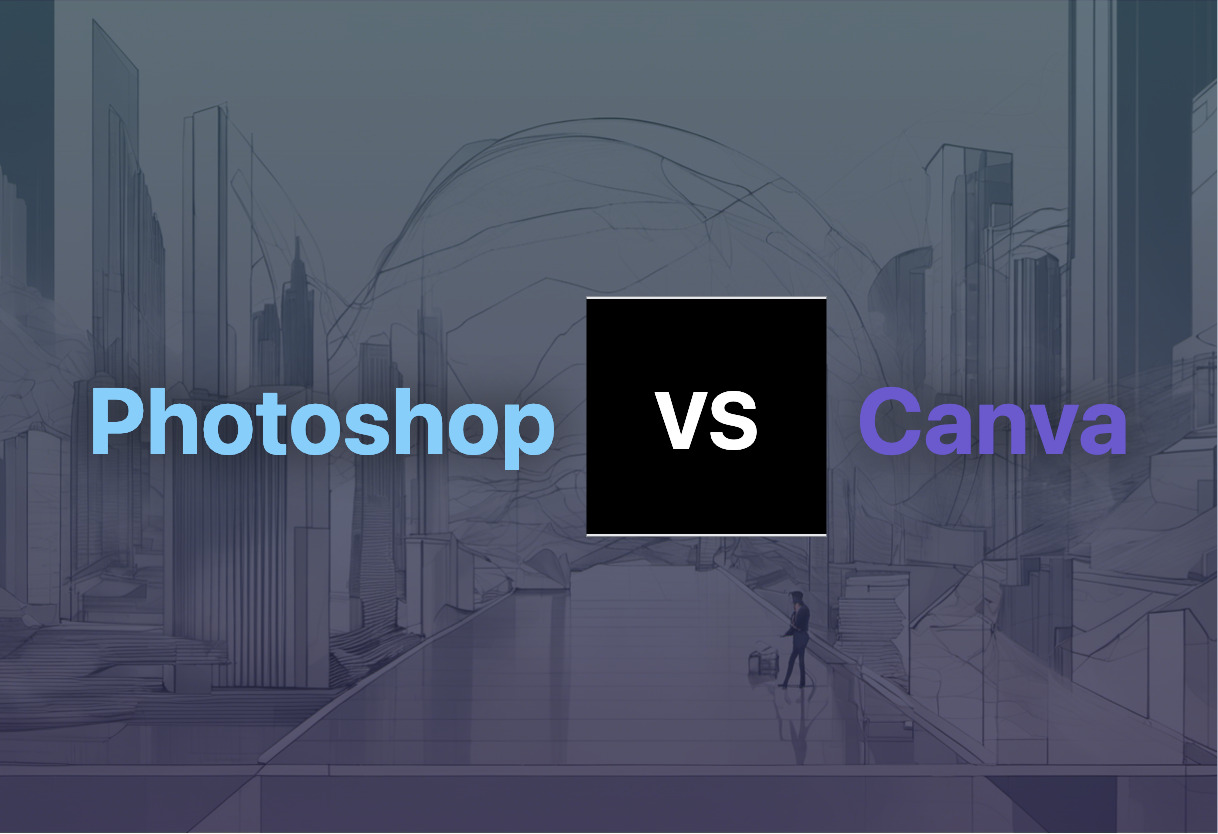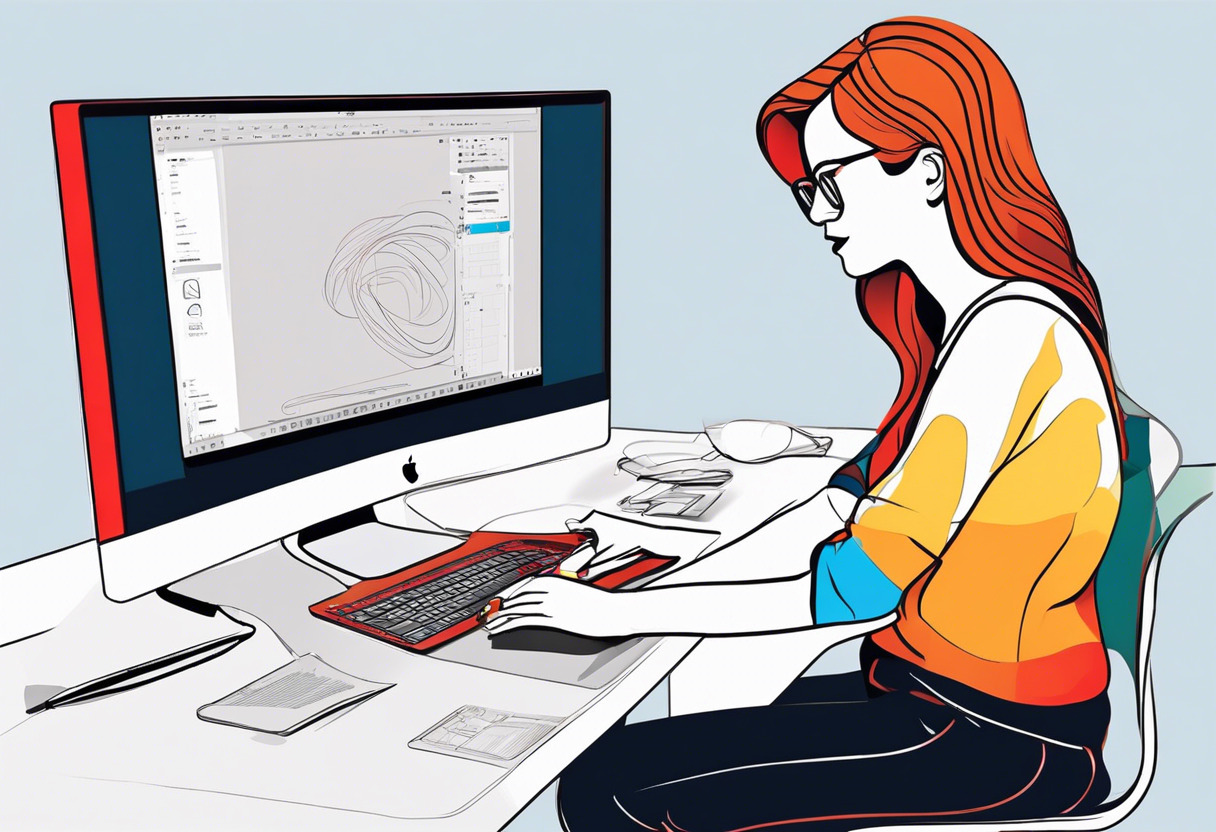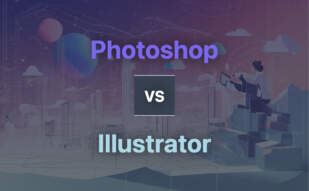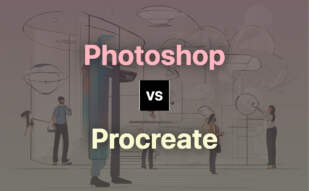For professionals requiring comprehensive features, in-depth image editing and manipulation, Photoshop tops the charts. On the contrary, for non-professionals seeking easy-to-use design tools for marketing or social media graphics, Canva proves more advantageous.

Key Differences Between Photoshop and Canva
- Usability: Photoshop requires a steep learning curve, while Canva is user-friendly with its drag-and-drop interface.
- Pricing: Photoshop is part of Adobe Creative Cloud’s monthly subscription, while Canva offers free, pro, and enterprise pricing tiers.
- Accessibility: Photoshop needs software installation, whereas Canva is a web-based platform.
- Features: Photoshop offers advanced image editing tools; Canva emphasizes templates and straightforward design elements.
- Applications: Photoshop is widely used by design professionals; Canva is preferred by businesses for content creation.
| Comparison | Adobe Photoshop | Canva |
|---|---|---|
| Year of Initial Release | 1988 | 2013 |
| Primary Features | Layers, Adjustment Layers, History Panel, Healing Brush, Clone Stamp Tool, Crop Tool, Color Balance, Levels, Curves, Blending Modes, etc. | Drag-and-drop Design, Photo Editing, Custom Fonts, Frames, Shapes, Grids, Icons, Pre-built Templates, Custom Charts and Diagrams |
| Part Of | Adobe Creative Cloud | Independent |
| Pricing (for One User) | Part of Adobe Creative Cloud Subscription | Free with Limited Features, Canva Pro: $12.99/month |
| Use Cases | Graphics and Layouts for Print Projects, Website Designs, Logos, Digital Art, etc. | Marketing Content, Presentations, and More for Companies of All Sizes |
| User Base | Professionals: Graphic Designers, Web Developers, Photographers, Illustrators | 100 Million Users, Companies of All Sizes |
What Is Adobe Photoshop and Who’s It For?
Adobe Photoshop is a pioneering image creation and graphic design tool, first unleashed on the world in 1988 by innovators Thomas and John Knoll. Since its inception, the software has evolved to offer an expansive range of image editing capabilities, from the basics of crop and color balance to intricate layer-based editing systems, supporting various color models and rendering possibilities for text, vector graphics, 3D graphics, and video.
This tool is primarily wielded by professionals such as Graphic Designers, Web Developers, Photographers, and Illustrators. Its versatility marries well with a broad array of projects, spanning print layouts to digital web designs, making it an irreplaceable instrument in the realm of professional digital art.

Pros of Adobe Photoshop
- Comprehensive toolset for image editing and graphic design
- Supports multiple layers and masks
- Regular updates and addition of new features
- Part of Adobe Creative Cloud, integrating other design tools
Cons of Adobe Photoshop
- May have a steep learning curve for beginners
- Subscription-based pricing model could be expensive for some
- Primarily for professional use, might be an overreach for casual users
What Is Canva and Who’s It For?
Founded in 2013, Canva is a web-based graphic design platform that has transformed how businesses approach marketing designs. Born in Sydney, Australia, the platform offers an intuitive drag-and-drop interface, hosting a myriad of elements like custom fonts, grids, and pre-built templates. As of 2023, Canva commands an audience of 100 million users worldwide.
Canva appeals to companies of all sizes, enabling them to create rich content from presentations to social media posts. With its recently launched AI-powered assistant, Magic Write, Canva is set to redefine content creation, making it an invaluable tool for marketers, educators, and non-profit organizations.

Pros of Canva
- User-friendly interface with drag-and-drop functionality
- Substantial collection of pre-built templates
- Offers free tier and special plans for education and non-profit sectors
- Features AI-assisted copywriting tool, Magic Write
Cons of Canva
- Professional features limited to paid tiers
- Data breach in 2019 may raise concerns over security
- May not offer advanced customization options as specialized software
Photoshop vs Canva: Pricing
Adobe Photoshop embodies a more professional-level pricing structure, while Canva offers a tiered pricing model, including a free variant, pro-level, and enterprise access.
Photoshop
As part of Adobe’s lineup, Photoshop’s pricing is interwoven with the Adobe Creative Cloud Suite. It doesn’t provide explicit pricing within the shared technology information. Generally, Adobe products are recognized for their professional-level pricing, aligning with resources often used within industry specialties.
Canva
Contrasted with Photoshop, Canva adopts a tiered pricing model. It endorses the following levels:
- Canva Free, Canva for Education, Canva for Not-for-Profit: Free, non-time-limited usage.
- Canva Pro: Priced at $12.99 USD per user per month for the first user, augmenting by $6.99 per month for supplemental users.
- Canva Enterprise: Commences from $30 USD per month.
Photoshop vs Canva: The Final Verdict
In the fierce competition between Photoshop and Canva, the ideal choice boils down to user needs and capabilities. Let’s break this down for various user segments.
Professionals in Graphic Design, Web Development, Photography, and Illustration
Adobe Photoshop, with its robust features such as Layers, Adjustment Layers, Blending Modes, and enhanced editing capabilities, is your go-to tool. For intricate projects requiring high precision and customization, Photoshop dwarfs Canva in every aspect. The platform’s reputation in pro-quality digital art and graphic editing is undeniable. Photoshop is your weapon of choice.

Small Companies and Freelancers
If you’re looking for quick, ready-made templates and convenient drag-and-drop features, Canva is the answer. With pre-designed graphics for everything from logos to social media posts, it is a lifesaver for freelancers and small businesses seeking swift, high-quality design solutions. Canva’s ease and speed of use arguably trumps Photoshop’s sophisticated but time-consuming capabilities.

Educators and Nonprofits
Canva scores bonus points with its free offerings for educational and nonprofit institutions. For these sectors, the versatile and budget-friendly nature of Canva makes it a clear choice over Photoshop, which can be a significant outlay for budget-constrained groups.

When choosing between Photoshop and Canva, professionals seeking intricate and highly custom design work should lean towards Photoshop. For speedy, ready-made designs, Canva is your best bet. In education and nonprofits, Canva’s cost-effective solutions reign supreme. Choose wisely.
Logan Bellbrook
Content writer @ Aircada with a knack for nature & AR/VR/XR. Blogging the intersection of tech & terrain.





